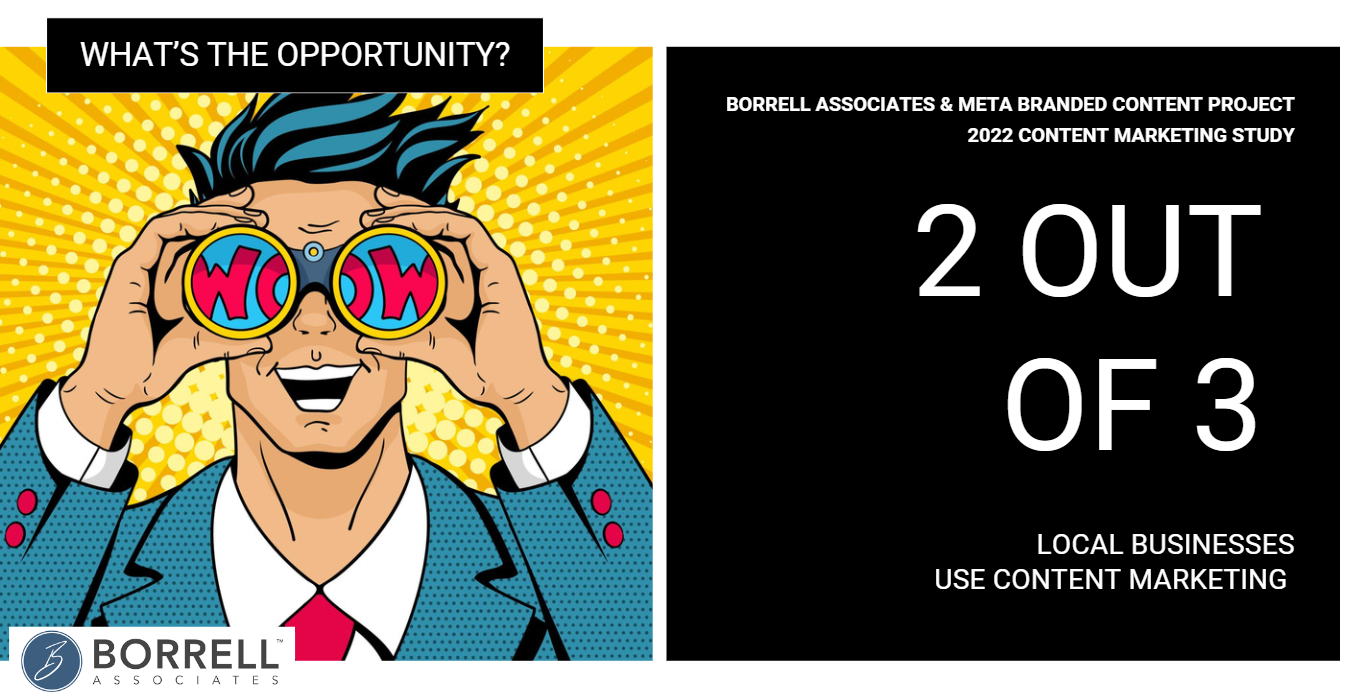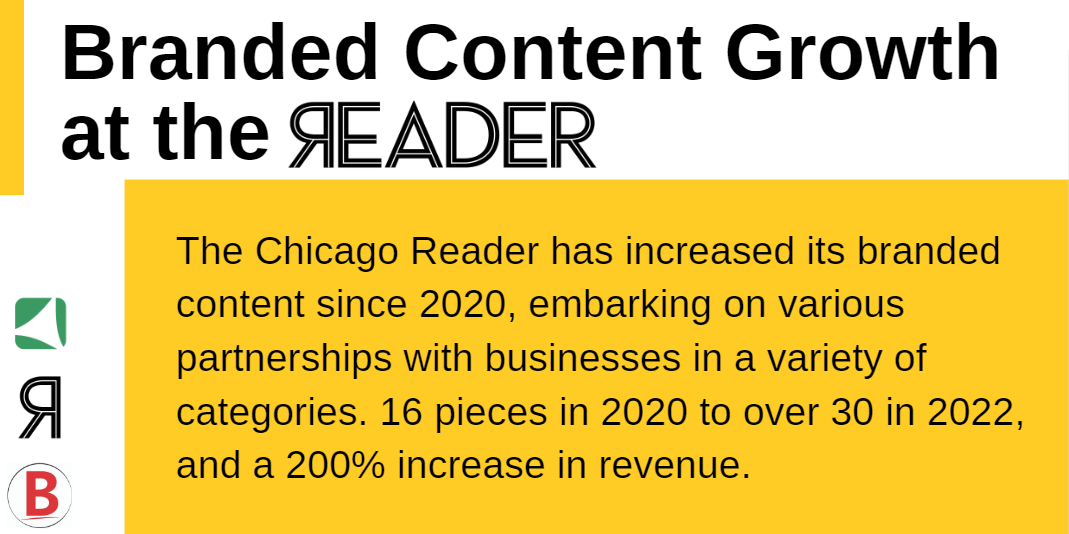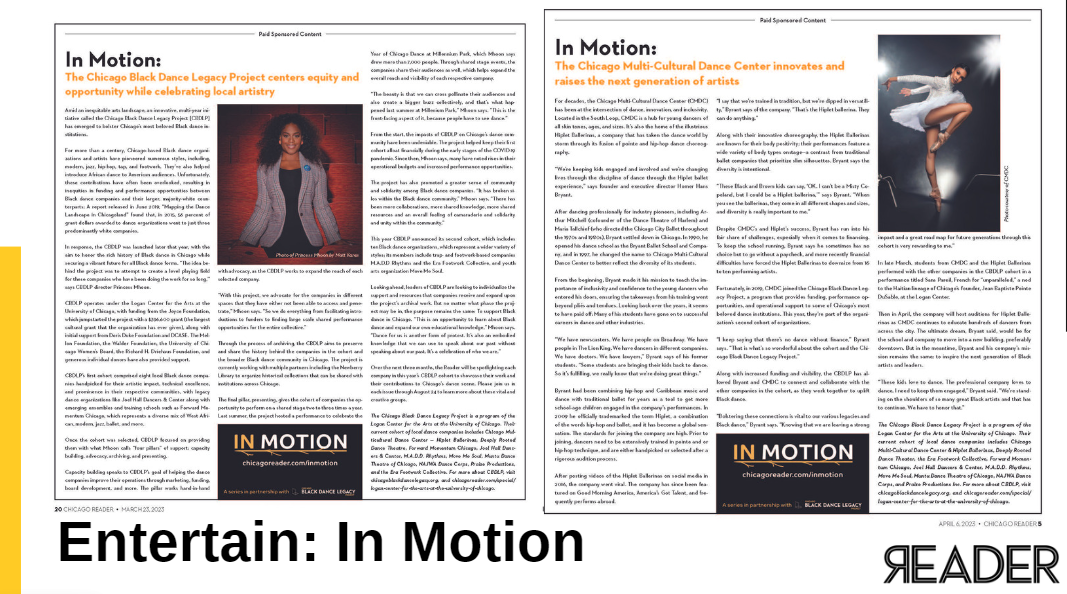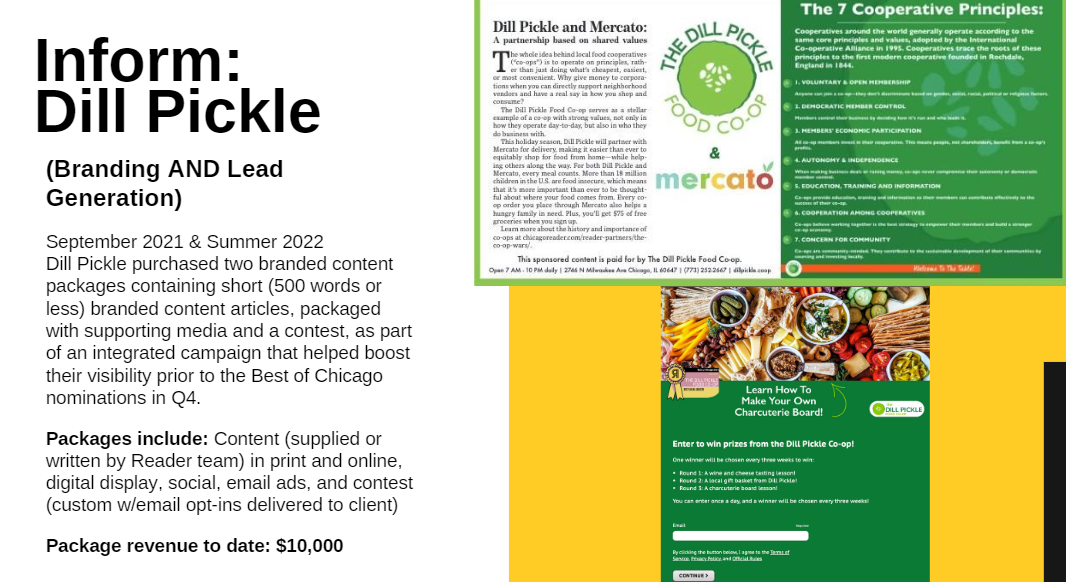Branded content marketing: How publishers are tapping into an $80 billion opportunity
As publishers and other media companies look to diversify and create new profit streams, branded content marketing is emerging as a low-hanging revenue fruit.
Learn how you can create a digital-first sales culture in media and build new revenue streams to thrive in a rapidly evolving buyer landscape.
After all, the strategy is predicated on what news organizations already do well: create high-quality content for the audiences they serve. The key difference being that it’s a sales-led initiative, rather than editorially driven.
A study last year by the Meta Branded Content Project (MBCP) and Borrell Associates found the majority of small and medium-sized businesses (SMB) engaged in, and invested, approximately $80 billion into content marketing efforts including branded content marketing. That’s $20 billion more than what they spent on content marketing in 2020.
Caption: A slide from a recent Vendasta webinar referring to Borrell Associates data, which shows 2 out of 3 local businesses use content marketing.
But why is branded content marketing taking off? Simply put, it’s effective. Very effective, as highlighted by Pressboard and IPG Media Lab research findings. The research found that branded content is 22 times more engaging than display ads and drives a 59-percent uplift in brand recall relative to other digital ads.
“There is massive revenue potential on the table for media companies in the world of branded content marketing. At the end of the day, branded content, like editorial content, is a form of storytelling that educates, empowers, or informs consumers,” says Julia Campbell, General Manager of MBCP.
She continues, “The good news for publishers and other media companies is that investment in branded content marketing is growing. SMBs are seeing competitors get results through branded content, so more of them are jumping onto the train and spending higher amounts.”
How to implement an effective branded content marketing strategy? Chicago Reader and Editor & Publisher share their views
Any media organization can adopt a branded content strategy without completely overhauling their processes, strategies, or human resources, according to Campbell. However, she strongly suggests that media organizations need the right mental model to make this strategy work.
“You need to build products that will connect your advertisers to your audience. You are using content and storytelling as a means of achieving that. You’re not selling content pieces in the hope somebody wants to buy them. You’re selling your audience,” she says.
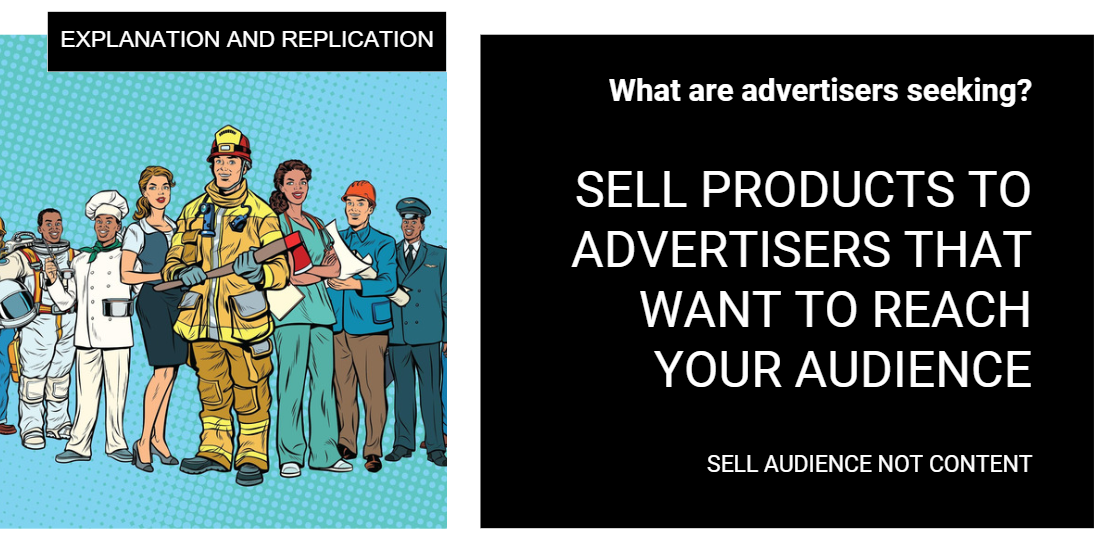
Caption: A slide from a recent Vendasta webinar, which Julia Campbell referred to, stating that publishers must focus on selling their audience first
One example of a publication that has found success in the world of branded content marketing is Chicago Reader, a non-profit weekly newspaper focussed on arts, culture and politics, which gets over 800,000 monthly website hits and distributes 60,000 magazines biweekly.
The Reader’s Senior VP of Growth & Strategy, Amber Nettles, has scaled its branded content offering since 2020 and now handles 30 branded projects annually.
Caption: A slide from a recent Vendasta webinar, which Amber Nettles spoke to in reference to the Reader’s branded content strategy experiencing a 200% increase in revenue
Despite having only around 40 employees, mostly in editorial, the Reader was able to successfully implement a branded content strategy. Aside from Nettles and a full-time VP of Sales, most of its sales reps are part time or on commission.
“When we began our branded content journey, we borrowed a part-time writer from the editorial team and eventually added 10 hours of work to her plate,” Nettles says.
“She manages the process, and creates and edits the branded content, so we didn’t really hire any new resources. We used an existing writer and gave them more hours once we got to the point where the revenue justified that higher spend.”
Examples of Reader branded content marketing campaigns
At a recent Vendasta webinar, Nettles shared several examples of branded content marketing campaigns along with pricing details.
One project was with the Logan Center for the Arts. It was secured by the Reader’s VP of Sales, who pitched a sponsored branded content package focused on the Chicago Black Dance Legacy Project. The series’ title, known as “In Motion,” was priced at $35,000 and involved profiling 12 dance organizations to boost awareness and excite readers about Chicago’s thriving local artistry scene.
Caption: The Reader’s print layout of its “In Motion” branded content marketing campaign
“The Reader also works with many freelance writers in Chicago. What’s nice about this is that we went out into the community, and we have writers who are getting compensated for their work and who are more embedded in that community and who have an arts background. It’s nice to be able to incorporate more voices for the benefit of our partners and readers,” Nettles says.
Another project was with The Dill Pickle Food Co-op and was designed to educate readers about the values co-op stores operate under. The project was priced at $10,000.
“This was a combo campaign that included branded content as well as an enter-to-win contest. I really enjoyed doing this one because I love incorporating different elements to achieve different goals,” Nettles says.
Caption: The Reader’s print layout of its branded content marketing campaign for the Dill Pickle Food Co-op
How the Reader prices branded content marketing campaigns
Nettles explained that the Chicago Reader offers branded content services that fall into three typical categories:
- Supplied: In this model, the client creates and provides the branded content, and the publisher is responsible for proofreading, editing, and publishing it.
- Partner: This is the most common model used by the Reader, where the client has a topic in mind but asks the publisher to write the content for them.
- Sponsored: In this model, the publisher creates the content idea, and the client or clients fund it. The content is supported either by businesses or grant/foundation money.
“I use our standard rate card and a branded content fee or writing fee, if necessary, depending on whether it is supplied or partner content. For us, the base rate is $500 for up to 750 words online only, and that lasts for up to one year. When it comes to sponsored content, then it becomes much more tailored,” she says.
For publications trying to find their feet on pricing, Nettles suggests sales leaders conduct market research and a competitor analysis in their local area, look at their own costs, and look at advertisers’ propensity to pay.
Why branded content marketing is King for Editor & Publisher
Mike Blinder, Publisher of Editor & Publisher, recognizes the unique ability of branded content to captivate audiences and has invested significant effort into integrating it into his sales team's process.
When he took over the publication just before the COVID-19 pandemic, Blinder quickly realized that branded content marketing provided far better returns for advertisers and could be tailored specifically for them, as opposed to selling vanilla advertising products such as inserts and display ads in isolation.
He emphasizes the importance of "borrowed trust" by using customer testimonials to promote advertisers’ products or services. To achieve this, publishers should blend the brand of the publication and the advertiser to create articles that showcase the advertiser's business and how it helps their customers.
The biggest mistake in creating branded or sponsored content is making it sound like a sales pitch, which can turn off the audience. Instead, the focus should be on emphasizing the advertiser’s story, educating consumers, or showing how it can help them.
Blinder identifies two initiatives that have been particularly successful for branded content at Editor & Publisher:
- Sponsored webinars featuring interviews with the advertiser's customers, where the advertiser can participate as well, and
- Short video interviews that can be embedded in press releases and other content assets deemed appropriate by the publisher.
"I'm surprised more companies don't do this. The advertiser gets a list of engaged prospects from the webinar; it’s lead generation on steroids. The top categories to target right now are health, home improvement, financial services, and real estate,” he told sales leaders who attended the Vendasta Media Summit earlier this year.
Other tips to succeed in branded content marketing
Campbell and Nettles suggest that publications can implement a branded content strategy if they have a clear plan and are willing to reorganize their resources, but they may face "Church and State issues with editorial" or lack advertiser buy-in.
To avoid any confusion between editorial content and branded content, managers of both departments must collaborate to ensure that branded content is clearly labeled as such.
“You want to make sure you’re very transparent about where the content is coming from and have your disclosure statements,” Campbell says.
When it comes to creating successful branded content campaigns, it's important to have a solid proposition for advertisers and a strategy that ensures continuous visibility to readers. Nettles stresses that campaigns must have multiple elements, such as digital display, social media, and print advertising, and someone must oversee project management, writing, and editing.
“We always make sure our advertisers understand that we won’t create content and let it just sit there. It will be reviewed, edited, and continuously promoted,” she says.
How to measure the success of branded content campaigns
Finally, all three of our experts agree that sales leaders and teams should educate advertisers that branded content marketing success can be measured in more ways than just website traffic numbers.
For Campbell, it's about achieving better connections and brand recall between advertisers and their audiences. “SMBs who are investing in branded content are discovering it’s a better way to drive a connection between advertisers and audiences compared to other marketing strategies,” she says.
For Blinder, a key factor is the number of registrants or leads generated from a webinar done in collaboration with an advertiser or an increase in calls.
For Nettles, beyond conveying great stories, it’s also about ensuring a smooth working process with partners. “That to me is as important as the numbers themselves and a key reason around why we’ve refined and honed our strategy so much around the client experience,” she says.
Valuable resources for you to use
Check out the replay of the recent webinar which featured Julia and Amber for more insights and examples of branded content marketing.
Enjoy these valuable resources discussed at the webinar: slide deck, branded content course, rebrandable sales decks, and the content marketing study.
And, you can access Mike’s presentation from the Vendasta Media Summit 2023 as well here.
Frequently asked questions
What is branded content?
The Meta Branded Content Project (MBCP) defines branded content as follows: “Branded content is defined as any sales initiative that uses content to engage the user and is paid for by a client who participates as part of the content, helps supply the content or sponsors the content that is distributed across any platform.”
Why does branded content work?
Branded content works because it allows advertisers to engage with audiences in a more organic and immersive way, while also providing value through informative or entertaining content.


